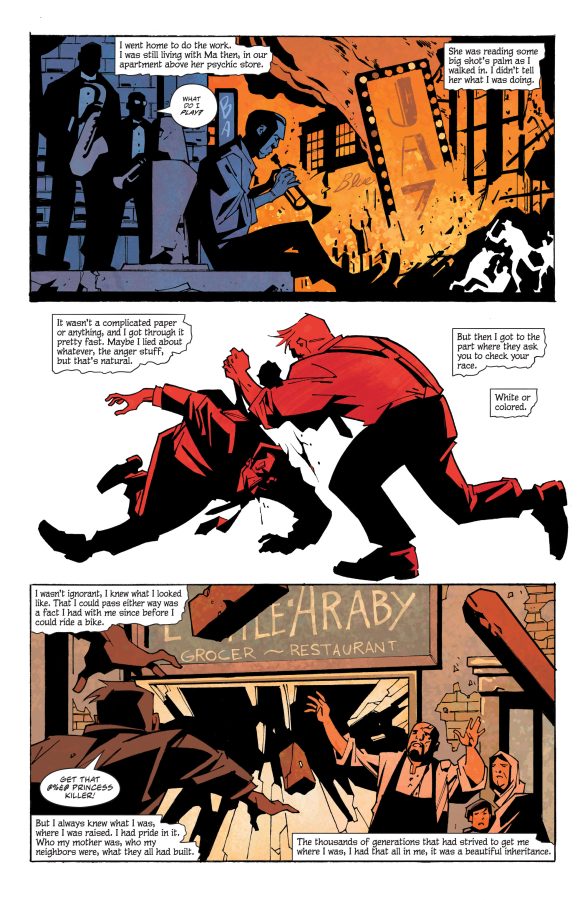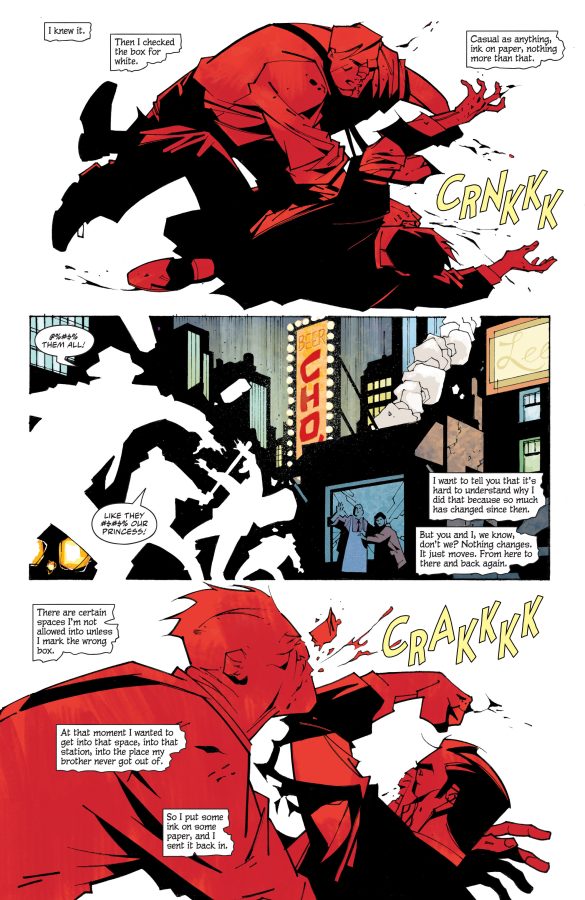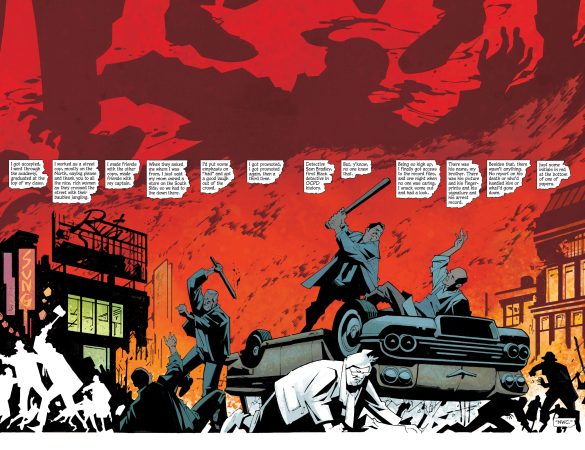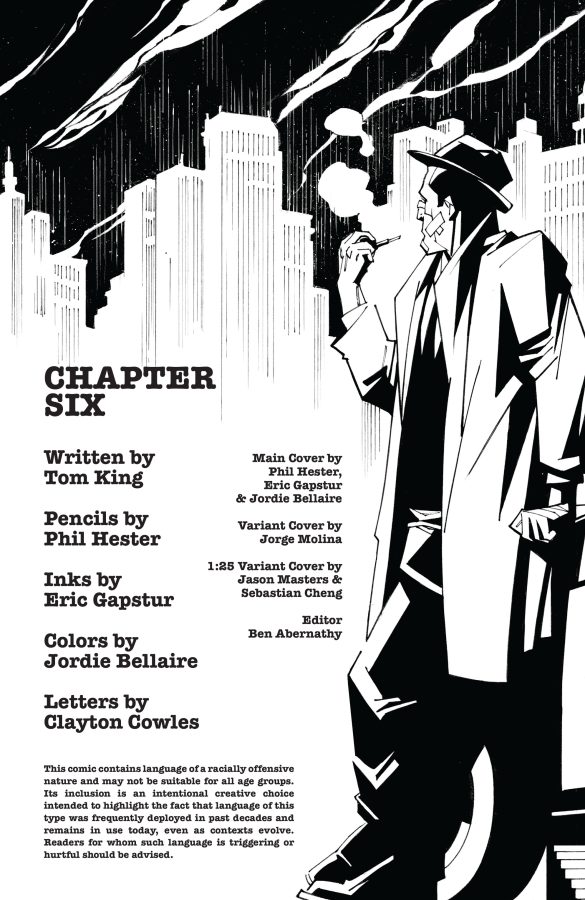Gotham City: Year One – “Chapter Six”
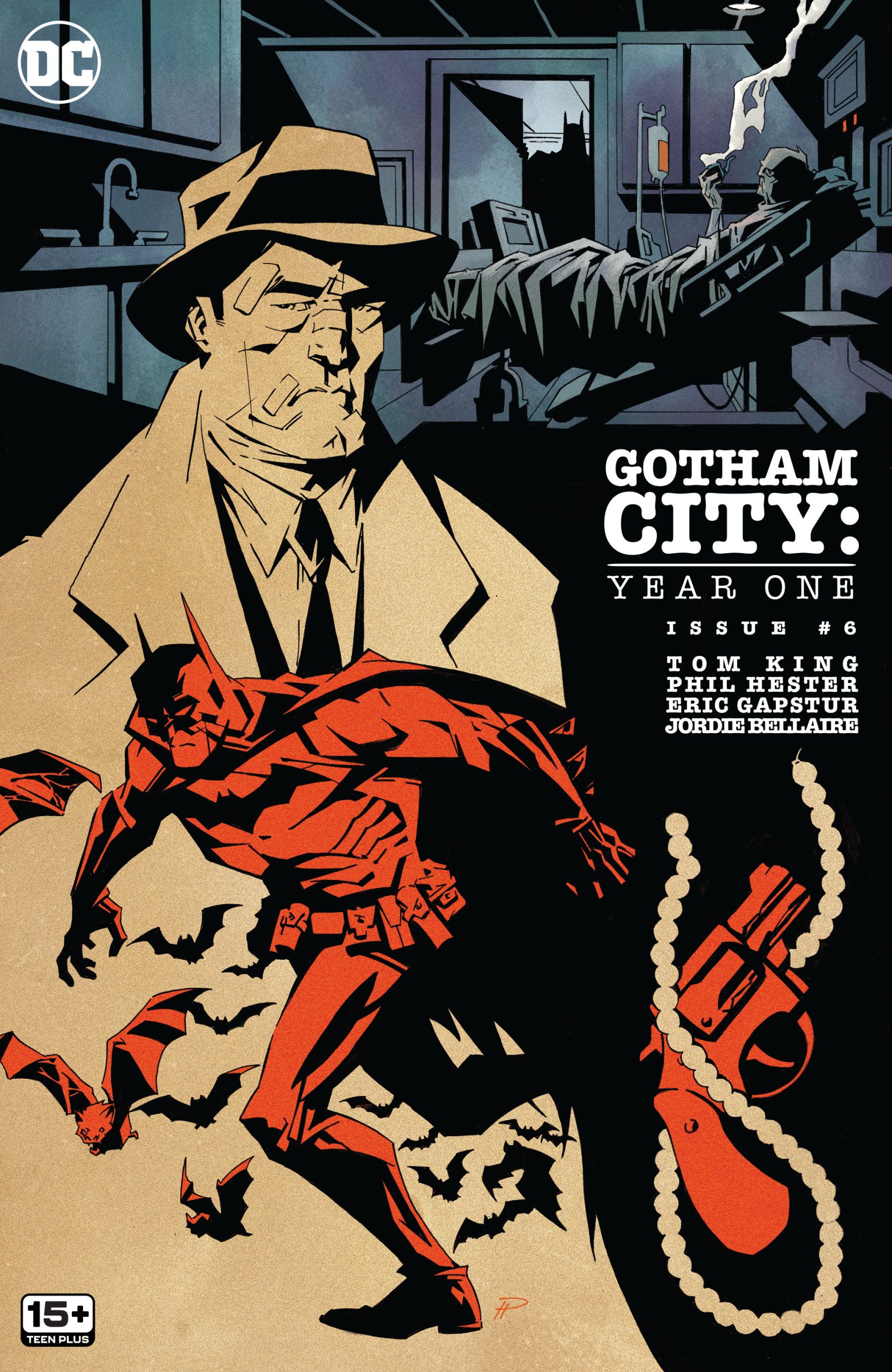 Writer: Tom King
Writer: Tom King
Artists: Phil Hester, Eric Gapstur
Color Artist: Jordie Bellaire
Letterer: Clayton Cowles
Review by Eric Lee
Gotham City: Year One #6 gives readers a fairly satisfying conclusion to the saga, despite some concerns with the setup.
The premise of the series hinged on the catalyst that changed Gotham City from a thriving metropolis to a more decrepit, crime-ridden metropolis. To the credit of writer Tom King and artist Phil Hester, they delivered a logical reason for what happened to Gotham. It makes it more believable that it wasn’t literally just one event that caused the downfall of the city, but a series of problems that have always plagued the town. The police department was already corrupt, the rich were free to be reckless with little oversight, and racial tensions. All of these elements add into a boiling pot where the city was already ready to explode.
Slam Bradley as a Morally Questionable Character
At the center of it is Slam Bradley. The character grew more and more interesting as the series went on. He went from being a cliché; a tough-talking, no-nonsense detective to a morally questionable individual. This issue presents maybe his biggest ethical dilemma and whether he made the right or wrong choice is left up to the readers to decide. King frames it perfectly, where it’s not just a simple resolution. Just like the crime noir genre that inspired this story, Gotham City: Year One does not have any easy answers.
Strange Race-Related Problems
To be honest, there are some parts of Bradley’s characterization that make him feel a little too dirty. I’m not sure why he needed to throw an innocent butler down a flight of stairs. That guy was no threat to Bradley. Speaking of problematic parts of Bradley, there is a monologue where Bradley talks about being a part of a race-related event. The narration implies that Bradley looks partially African American, which is weird because he has always been depicted as very Caucasian. It is a strange character moment for King to add in.
Incidentally, there are some elements that I wished King had made more clear, that led up to Gotham’s downfall, particularly the racial discrimination that Gotham’s minorities endured. It’s been hinted at a few times, but never depicted as a huge piece of their city culture. If King seeded the racial problems more explicitly in the series, it would have helped readers understand the tension that had been boiling under the surface the entire time.
I’ve run out of unique ways to praise Phil Hester’s art and Jordie Bellaire’s colors. I’ve said it repeatedly, Hester’s moody art with Eric Gapstur’s crisp inks, fit the tone of this Year One tale perfectly. It’s at its very best when the art team becomes more experimental with shadows and silhouettes. Bellaire accompanies these with colors that dramatically affect the tone of a scene. This is a perfect visual art team.
Conclusion
Gotham City: Year One #6 is a solid conclusion for a series that may have wavered for a bit, but then raced to the end. There are some weird race-related elements that hurt the final issue, but this was a rewarding ending to the series.

Images courtesy of DC Entertainment

